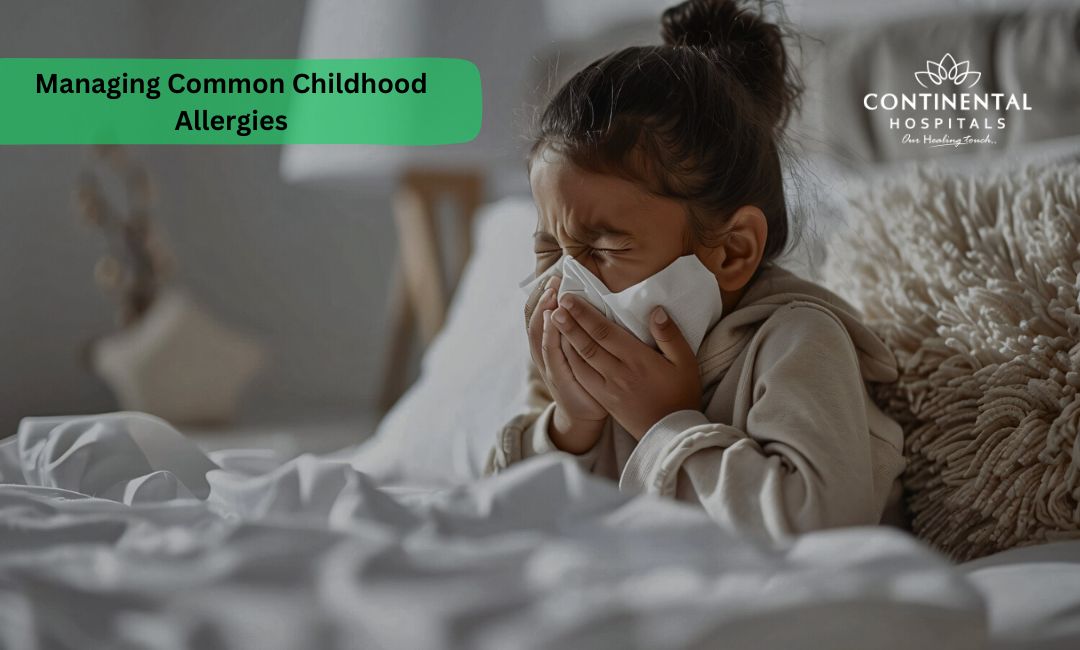Childhood allergies are on the rise globally, impacting millions of children and their families. From food allergies to environmental triggers like pollen and pet dander, allergies can vary in severity and greatly affect a child's well-being if not managed effectively. These allergies manifest in a range of symptoms, from mild discomfort to severe reactions that can be life-threatening.
The prevalence of childhood allergies underscores the importance of understanding and addressing them comprehensively. Without proper management, allergies can disrupt daily activities, limit social interactions, and even pose significant health risks. Therefore, it's crucial for parents, caregivers, and healthcare providers to be vigilant in identifying triggers, implementing preventive measures, and providing appropriate treatment when necessary.
Understanding Childhood Allergies
What are Childhood Allergies?
Childhood allergies occur when the immune system overreacts to substances that are typically harmless, such as certain foods, pollen, pet dander, or dust mites.
Common childhood allergies include food allergies (e.g., peanuts, eggs, milk), hay fever (allergic rhinitis), asthma, eczema, and allergic reactions to insect stings.
Identifying Allergic Reactions in Children
🥗 Healthy Plate Challenge
🍽 Add Your Favorite Dish
Pick Your 6 favorite foods, eat, and see the results.Drag & drop foods onto your plate.
Drop Food Here
Symptoms of childhood allergies can vary depending on the type of allergy but may include:
- Skin reactions (rashes, hives, eczema)
- Respiratory symptoms (sneezing, coughing, wheezing)
- Digestive issues (nausea, vomiting, diarrhea)
- Swelling of the face, lips, tongue, or throat
It's essential for parents to be vigilant and recognize the signs of allergic reactions in their children.
Managing Common Childhood Allergies
Consulting with a Pediatrician or Allergist
- If you suspect that your child has allergies, consult with a pediatrician or allergist for proper diagnosis and treatment.
- Allergy testing may be recommended to identify specific allergens triggering your child's symptoms.
Creating an Allergy Action Plan
- Work with your child's healthcare provider to develop an allergy action plan outlining steps to take in case of an allergic reaction.
- Share the plan with teachers, caregivers, and family members to ensure everyone knows how to respond appropriately.
Avoiding Allergen Exposure
- Identify and avoid triggers that cause allergic reactions in your child.
- For food allergies, read ingredient labels carefully, and communicate dietary restrictions to schools and restaurants.
- Keep indoor environments clean to reduce exposure to dust mites, pet dander, and mold.
Medication Management
- In some cases, medications such as antihistamines, nasal sprays, or asthma inhalers may be prescribed to manage allergy symptoms.
- Ensure that medications are administered as directed by your child's healthcare provider.
Emergency Preparedness
- Educate family members, caregivers, and teachers on how to administer emergency medication such as epinephrine (EpiPen) in case of a severe allergic reaction (anaphylaxis).
- Always carry emergency medication with you, especially when traveling or participating in outdoor activities.
Encouraging Healthy Habits in Children
Balanced Diet
- Provide a balanced diet rich in fruits, vegetables, whole grains, lean proteins, and healthy fats.
- Limit processed foods and sugary snacks, which may exacerbate allergic reactions or contribute to inflammation.
Regular Exercise
- Encourage children to engage in regular physical activity to support overall health and immune function.
- Outdoor activities can also help strengthen the immune system and reduce the risk of indoor allergies.
Adequate Sleep
- Ensure that children get enough sleep each night to support immune function and overall well-being.
- Establish a consistent bedtime routine to promote restful sleep.
Stress Management
- Teach children stress-reduction techniques such as deep breathing exercises, mindfulness, or yoga.
- Chronic stress can weaken the immune system and exacerbate allergic reactions.
Indoor Allergies Affecting Children
Common Indoor Allergens
- Dust mites, pet dander, mold, and cockroach droppings are common indoor allergens that can trigger allergic reactions in children.
- Keep indoor environments clean and well-ventilated to minimize exposure to these allergens.
Preventive Measures
- Use allergen-proof mattress and pillow covers to protect against dust mites.
- Vacuum carpets and upholstery regularly, and wash bedding in hot water weekly to remove allergens.
- Keep pets out of bedrooms and vacuum pet hair frequently to reduce exposure to pet dander.
Air Filtration
- Consider using HEPA air purifiers to remove airborne allergens from indoor spaces.
- Change HVAC filters regularly and maintain proper humidity levels to prevent mold growth.
Outdoor Allergies Affecting Children
Seasonal Allergies (Hay Fever)
- Pollen from trees, grasses, and weeds can trigger seasonal allergic rhinitis (hay fever) in children.
- Monitor pollen counts and limit outdoor activities during peak pollen seasons.
Allergic Reactions to Insect Stings
- Be vigilant when children are outdoors to prevent insect stings from bees, wasps, hornets, or fire ants.
- Teach children to avoid areas where insects are prevalent and to wear protective clothing when necessary.
Preventive Measures
- Encourage children to shower and change clothes after outdoor activities to remove pollen and other outdoor allergens.
- Keep windows and doors closed during high pollen seasons, and use air conditioning to filter indoor air.
conclusion
In conclusion, managing common childhood allergies requires a combination of preventive measures, medication management, and healthy lifestyle habits. By working closely with healthcare providers, parents can develop effective strategies to identify and manage their child's allergies, allowing them to lead healthy, active lives free from allergic symptoms. Encouraging healthy habits in children, both indoors and outdoors, can also help strengthen the immune system and reduce the risk of allergic reactions. With proper management and support, children with allergies can thrive and enjoy a high quality of life.
Related Blog Articles:
.webp)














